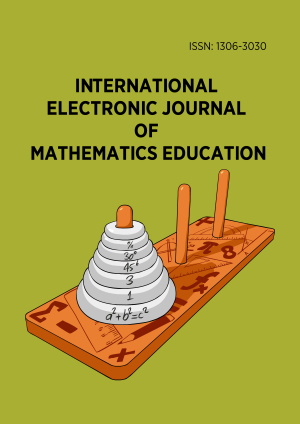Abstract
The study examined the types of explanations students provide for fraction magnitude problems. Student responses were coded into one of five explanation types: (a) absent, (b) faulty, (c) conceptual-partially developed, (d) algorithmic, and (e) conceptual-fully developed. When examining latent classes specific to students’ explanations of their knowledge of fraction magnitude, a five-class model was the most tenable, conveying the presence of five distinct student profiles. The algorithmic class represented the largest percentage of student explanations and also revealed the strongest correlation with criterion measures. A combined algorithmic-conceptual class was not identified.
License
This is an open access article distributed under the Creative Commons Attribution License which permits unrestricted use, distribution, and reproduction in any medium, provided the original work is properly cited.
Article Type: Research Article
INT ELECT J MATH ED, Volume 21, Issue 1, February 2026, Article No: em0861
https://doi.org/10.29333/iejme/17446
Publication date: 01 Jan 2026
Online publication date: 19 Nov 2025
Article Views: 240
Article Downloads: 229
Open Access References How to cite this article
 Full Text (PDF)
Full Text (PDF)